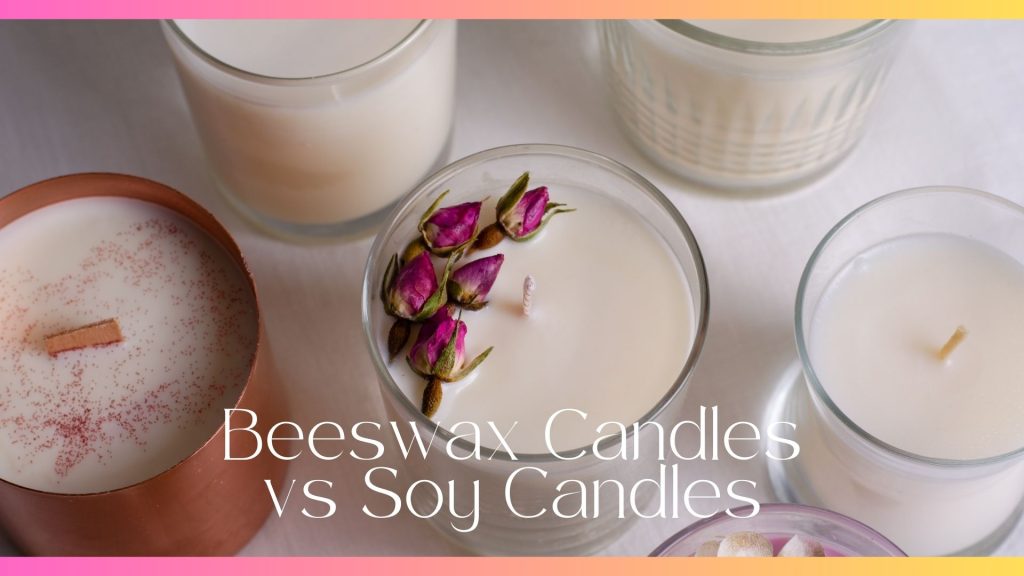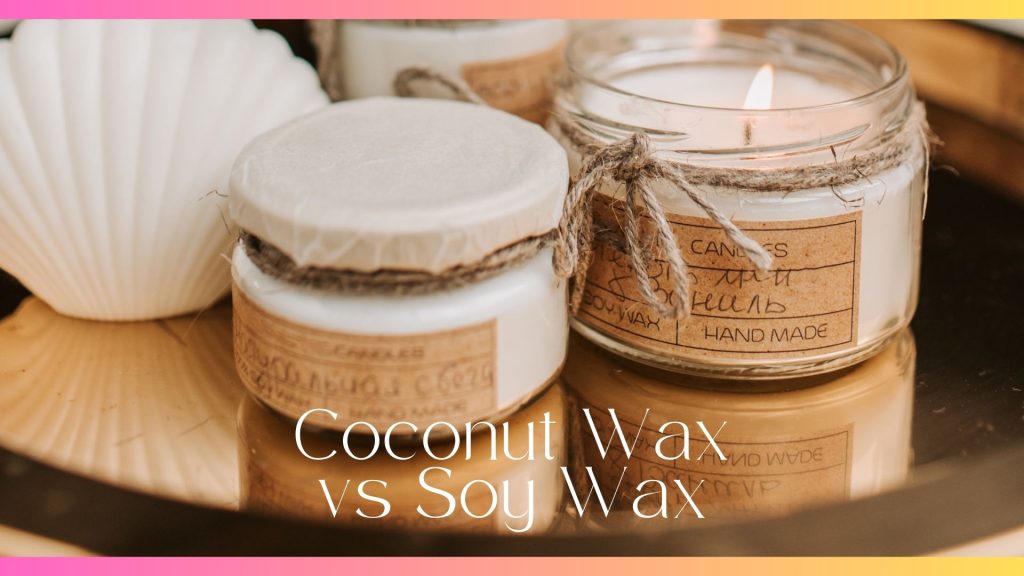Unsure if soy candles are bad for the environment? Need a better understanding before you start a candle business? Here are 6 things to know.
There’s been greater demand in recent years for soy candles, as they’re a purportedly eco-friendly alternative to traditional paraffin candles. Soy candles are made from soybean oil which is a renewable and biodegradable resource, hence preferred by environmentally conscious consumers. However, there are still some concerns on its true environmental impact.
In this article, I’ll be sharing 6 common questions surrounding soy candles and their potential effects on the environment.
Disclaimer: This post may contain affiliate links. This means I may earn a small commission (at no cost to you) if you sign up for a program or make a purchase using my link!
Related Posts:
- 7 Things To Compare Coconut Wax vs Soy Wax
- 6 Key Differences Beeswax Candles vs Soy Candles
- 5 Factors To Consider On How Much Fragrance Oil To Add To Soy Wax?
Are Soy Candles Bad For The Environment: 6 Things To Know
1. Origins and Sustainability
If you didn’t know, soy candles are primarily made of soybean oil – a byproduct of soybean cultivation. Soybeans are a widely cultivated crop that’s primarily grown for animal feed and human consumption e.g. soybean milk. It is also used for industrial applications, including as wax for candle making.
As it is an agricultural product, soy candles are considered as utilizing a renewable resource which also helps reduce waste. One can argue that soy may be cultivated for candle making, but it is just a small fraction of the soy industry, so we’re just making greater use of it. When compared with paraffin wax, it is far sustainable as paraffin is derived from non-renewable fossil fuels.
The same can be concluded for other types of plant-based wax like coconut candles and even beeswax (animal-based) – both are eco-friendly and suitable for candle making.
2. Renewable Resource Management
There has been greater initiatives worldwide surrounding soy agriculture as people look into it as a source of production for food and home products. Responsible soybean farming practices have helped enhance resource efficiency and minimize ecological harm. This primarily looks into prioritizing soil health, water conservation, and biodiversity preservation.
Sustainable production methods such as reduced tillage, crop rotation, and integrated pest management have become popular. No-till farming helps reduce erosion of soil which makes it healthier for earthworms to live and when paired with a crop rotation system, there’s less nutrient depletion and growing pests.
By purchasing soy candles that are produced through sustainable soybean cultivation, consumers like you can contribute to the same positive environmental outcomes. Win-win!
3. Deforestation and Land Use
Of course, with any kind of agriculture, there are concerns about deforestation and extensive land use. The issue is even more of a concern in parts of South America where soybeans are grown extensively.
However, it’s important to differentiate between soybean cultivation for food and industrial purposes. As I’ve mentioned above, majority of soybeans grown are used for livestock feed and human consumption. There is only a fraction that’s allocated for other industries such as candle making.
It’s important to note that the same concerns exist even for the market of coffee beans. As a result, there are now responsible sourcing practices and certification standards that helps promote sustainable practices for soy agriculture – from production to consumption. This is established by non-profit organizations like the Round Table on Responsible Soy Association.
4. Carbon Footprint and Emissions
With any types of production or mass agriculture, there are concerns about carbon footprint and greenhouse gas emissions. While soy candles offer greater advantages over paraffin candles, they are not entirely free of environmental impact. Generally, the cultivation, processing, and transportation of soybeans still requires extensive energy and resources, which will contribute to carbon emissions and environmental degradation.
It also does not help that some soy candle formulations may contain additives or modifiers that could affect the environment. As a candle maker, you’ll need to take into account the other materials used in your candle recipes and be extra detail-oriented.
As a consumer, it’s best to stick to soy candles that are made in small batches or by small businesses where products are made with natural ingredients. When burned, soy candles generally have a lower carbon footprint and emits fewer pollutants compared to paraffin candles. It is also completely petro-carbon soot free, which helps with air quality when used indoors.
5. Biodegradability and Decomposition
While it’s important to know that soy candles are made of renewable resources, it’s equally crucial to understand that soy candles are biodegradable. This means that it can be decomposed naturally which avoids pollution or detrimental long-term effects to mother Earth.
Don’t know how this works? Soy wax is composed of natural triglycerides, which readily break downs into harmless byproducts when exposed to environmental conditions conducive for decomposition. So when you’re throwing them out (responsibly), just know it can biodegrade relatively quickly without having to go through any extensive processes.
This makes soy wax more appealing as paraffin wax can persist in the environment for extended periods of time and pose long-term environmental harm.
6. Lifecycle Analysis and Environmental Assessment
Just like anything else, assessing the environmental effects of soy candles requires a comprehensive lifecycle analysis. You’ll need to consider what happens at all stages of production including its use and disposal to get a full picture.
To accurately evaluate the environmental impact, factors like raw material sourcing, manufacturing processes, packaging, transportation, and end-of-life disposal must be taken into consideration. As a consumer, it’s tough to know these details and what makes a product you’ve purchased off the shelves.
However, you can try to shop better by being more aware of some details. What are the ingredients in the candle? How is it made? What type of packaging is used?
If you’re a candle maker that’s making a living selling soy candles, progressively move towards adopting a more sustainable process. At the same time, educate your customers on your eco-friendly initiatives so they understand their options better. Tiny steps count!
Bottom Line
Soy candles are not inherently bad for the environment. They have their share of pros and cons. It’s far more complicated and difficult for an average person to assess but it’s definitely a much better alternative to paraffin candles.
Start by supporting sustainable practices along its supply chain. Choose better ingredients and purchase quality products. Whether you’re a consumer or a seller of soy candles, you can contribute to a more responsible and eco-friendly candle industry.
Practice makes perfect!


